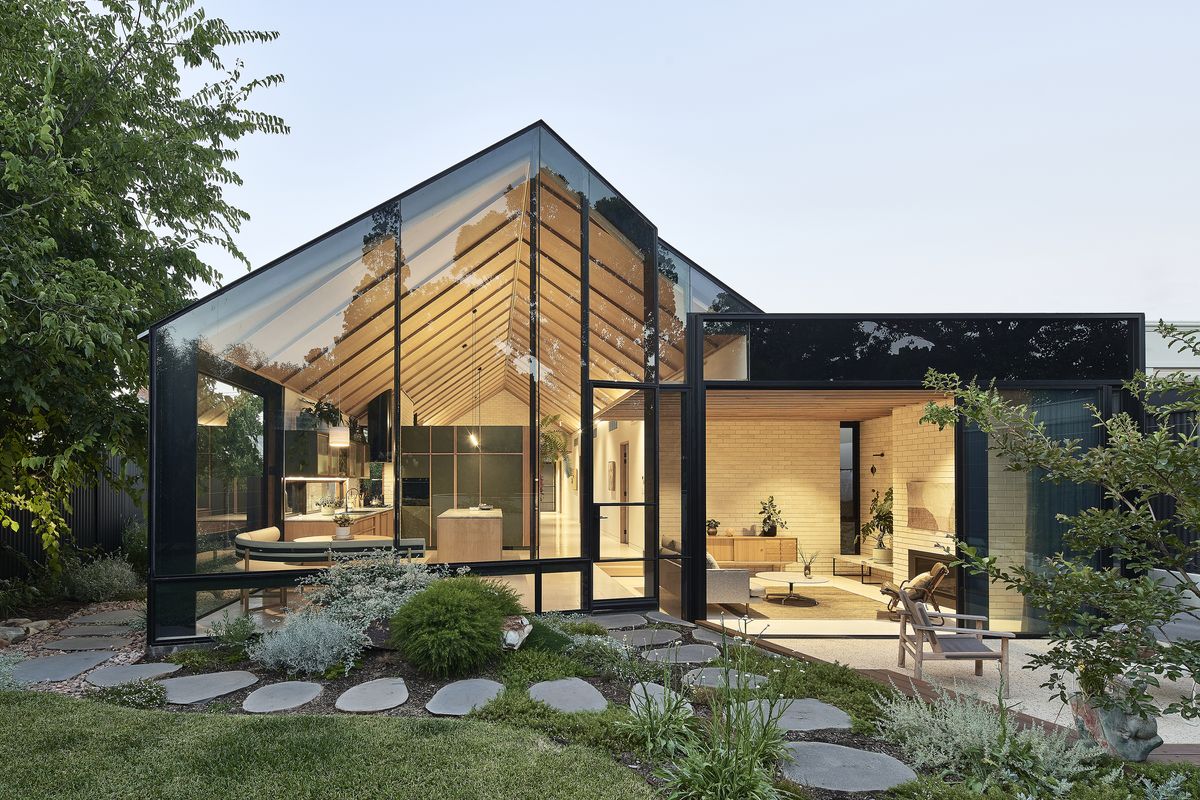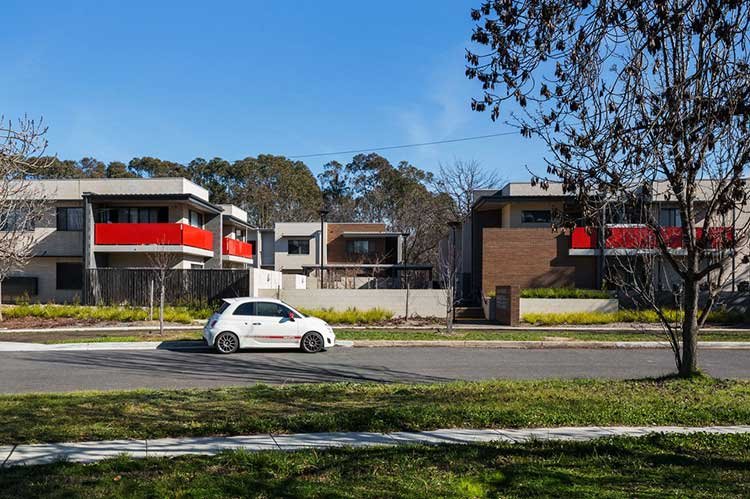Innovative Residential Interior Architect to Create Functional and Stylish Interiors
Wiki Article
Top Trends in Residential Design You Should Learn About
As domestic design remains to develop, numerous compelling trends are shaping the means we make and populate our space. Key advancements such as lasting building practices, the integration of clever home technology, and the rise of modular homes underscore a considerable change towards both functionality and environmental responsibility. Furthermore, principles like open plan living and biophilic design are redefining our interaction with area and nature. Recognizing these patterns not just notifies layout selections however likewise exposes more comprehensive implications for way of life and neighborhood - residential house architect. What might these advancements suggest for the future of household living?
Sustainable Structure Practices
An increasing variety of property tasks are accepting sustainable building techniques, driven by a growing recognition of ecological impact and power effectiveness. This shift is characterized by the integration of environment-friendly products, energy-efficient styles, and ingenious construction methods. Home owners and builders are significantly prioritizing using renewable energies, such as bamboo and recycled metals, which not just lower the carbon footprint yet also improve the toughness and visual allure of homes.Incorporating energy-efficient systems is another essential aspect of sustainable structure - residential house architect. Attributes such as high-performance insulation, energy-efficient home windows, and solar panels are becoming criterion in brand-new domestic layouts. These aspects not only add to reduced power usage but likewise give substantial long-term financial savings for house owners
Furthermore, the design of lasting homes commonly emphasizes all-natural light and air flow, minimizing the dependence on fabricated illumination and environment control systems. Landscape design methods, such as xeriscaping, more promote sustainability by decreasing water usage.
As the need for lasting living solutions continues to increase, the household architecture sector is poised to introduce and adjust, making certain that future homes are not only ecologically liable however likewise comfy and functional for their residents. - residential house architect
Smart Home Modern Technology
Smart home technology is revolutionizing the method homeowners communicate with their living rooms, enhancing power, safety and security, and ease management. This ingenious technique incorporates various gadgets and systems, allowing users to manage their homes from another location or via automated processes. Central to this fad is making use of smart gadgets such as thermostats, lights, protection cameras, and home appliances, all connected through the Web of Points (IoT)One of the most enticing functions of wise home innovation is the capacity to customize setups for ideal energy effectiveness. Homeowners can check power usage and readjust illumination, heating, and cooling based upon their routines, substantially reducing energy expenses. Advanced protection systems furnished with smart locks and surveillance cameras give peace of mind, making it possible for remote tracking and signals to possible safety violations.
Combination with voice-activated aides enhances customer experience, permitting homeowners to control tools with easy voice commands. As modern technology remains to develop, the possibility for smart home systems to improve lifestyle expands, making them a crucial factor to consider in modern residential design. Eventually, clever home technology is not simply a pattern but a fundamental change towards extra intelligent living environments.
Open Concept Living
Open up principle living has become a specifying function in modern property design, defined by the elimination of conventional barriers in between areas. This design approach advertises fluidity and connection within the home, permitting a seamless transition in between areas such as the kitchen, dining, and living rooms. By removing wall surfaces and dividings, open concept formats develop a feeling of spaciousness, cultivating a welcoming ambience that boosts social communication.
Furthermore, this strategy to property layout lines up with minimalism, focusing on useful simpleness click here for info and aesthetic coherence. Property owners appreciate the adaptability of these formats, which can be easily adapted to mirror personal style with furnishings plan and decor. As open concept living remains to obtain traction, it stays a testament to advancing household dynamics and the need for homes that enhance connection and comfort.
Biophilic Layout
Biophilic design has ended up being increasingly substantial in property style, highlighting the innate link between human beings and nature. This design viewpoint seeks to incorporate natural environments into living spaces, consequently cultivating a feeling of wellness and enhancing the high quality of life for passengers. By including attributes such as natural light, plants, and organic materials, biophilic layout advertises an unified partnership in between interior atmospheres and the environment.Secret elements of biophilic design include large windows that provide unobstructed sights of exterior landscapes, living wall surfaces that present plant into insides, and open layout that motivate air flow and all-natural light penetration. Water features, both inside and outside the home, offer to create relaxing atmospheres and enhance sensory experiences.
Additionally, the use of sustainable materials not only supports ecological stewardship yet also adds to healthier indoor air high quality. As awareness of environmental concerns boosts, homeowners are significantly focusing on layouts that reflect their link to nature. In essence, biophilic design not only elevates visual charm but additionally addresses emotional and emotional requirements, making it a vital fad in contemporary residential design.
Modular and Prefab Homes

Moreover, modular and prefab homes are created with sustainability in mind. Several manufacturers utilize energy-efficient systems and environment-friendly materials, such as solar panels and advanced insulation strategies, adding to minimized power consumption and lower energy expenses for house owners. The versatility of design options allows for personalization, accommodating varied practical requirements and aesthetic choices.
As the demand for affordable real estate continues to climb, prefab and modular homes provide a feasible option, dealing with both financial and ecological difficulties. Communities are progressively identifying the possibility of these structures, integrating them right into rural and metropolitan settings. On the whole, the pattern towards modular and prefab homes signifies a shift towards more sustainable, effective, and adaptable living environments, making them an essential facet of modern residential design.
Verdict
In conclusion, the developing landscape of domestic style showcases substantial trends that prioritize technology, sustainability, and health. Lasting structure practices and wise home technologies improve performance and convenience, while open concept living and biophilic design foster social communication and a connection to nature. Moreover, the surge of modular and prefab homes offers customizable and economical solutions, reflecting a broader shift towards functional and accountable living. These patterns jointly highlight a commitment anonymous to creating unified and cutting-edge residential atmospheres.Secret developments such as lasting building techniques, the assimilation of smart home modern technology, and the increase of modular homes underscore a substantial shift in the direction of both functionality and environmental responsibility.The increase of modular and prefab homes has actually changed the property design landscape, offering cutting-edge solutions for effective and sustainable living.Moreover, modular and prefab homes are made with sustainability in mind. Generally, the fad toward prefab and modular homes signifies a shift towards much more lasting, effective, and versatile living environments, making them an essential facet of contemporary property style.
Sustainable building techniques and wise home innovations enhance performance and ease, while open principle living and biophilic layout foster social interaction and a link to nature.
Report this wiki page